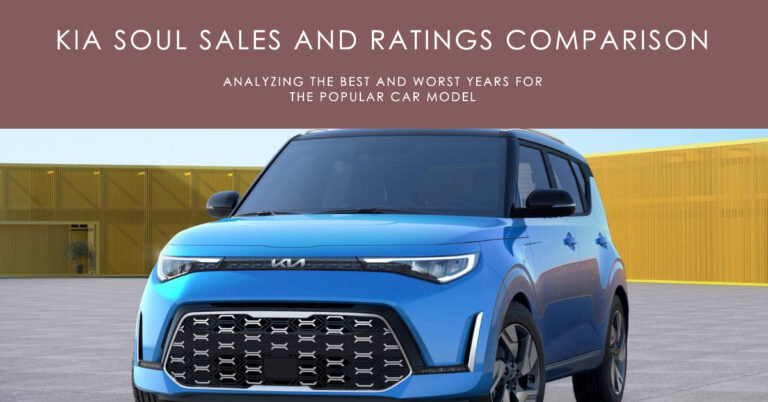What Does SAE Stand For In Motor Oil? Simple, Detailed Explanation

Have you ever peered under the hood of your car, glanced at the motor oil bottle, and noticed those letters “SAE” printed on the label? Did you wonder to yourself:
“What in the world does SAE stand for on my motor oil?”
It’s a common question many drivers have when they see those three letters pop up. You want to make sure you’re using the right oil for your vehicle, but aren’t quite sure what that SAE designation means.
No worries, we’ll explain it all in simple terms!
The short answer is: SAE stands for the Society of Automotive Engineers.
This professional organization sets standards for the engineering, design, and manufacturing of cars, trucks and auto-related products. Part of their work involves classifying motor oils based on viscosity – how thick the oil is.
Now let’s dive into the details…
In this post, you’ll learn:
- What SAE International is and their role in classifying motor oil
- Exactly how they categorize oil viscosity grades like 5W, 10W, etc.
- Why you need different viscosity oils based on climate and vehicle
- How to find the right SAE grade for your car’s engine
- Tips for understanding oil labels when shopping
- And much more on understanding SAE motor oil meanings!
So if you’re still puzzled over what SAE stands for on bottles of car oil, read on for a full explanation. We’ll make sure you know exactly what those letters mean and how to choose the proper SAE viscosity for your vehicle.
Table of Contents
A Closer Look at SAE International
SAE International (formerly known as the Society of Automotive Engineers) is a global association of engineers and technical experts in the aerospace, automotive and commercial vehicle industries.
They set thousands of technical standards used around the world for the testing and manufacturing of motor vehicles and related technologies. Everything from engines and brakes, to batteries and charging ports come under their purview.
Part of SAE’s role involves classifying all commercially sold motor oils based on their viscosity grades and performance. This helps manufacturers, mechanics and everyday drivers select oil based on their particular vehicle and climate needs.
But what exactly is viscosity when it comes to motor oil, and how does it relate to that SAE designation? Let’s break it down…
Understanding Viscosity Grades for Motor Oil
Viscosity refers to the thickness of oil.
Thinner oils have lower viscosity, and thicker oils have higher viscosity. Picture the differences between grades of maple syrup – thin and pourable pancake syrup has lower viscosity than thick, molasses-like maple syrup.
Just like syrup, thinner oils pour and spread more easily than thick oils. But thickness isn’t the only factor that determines an oil’s viscosity grade.
SAE viscosity ratings specifically measure how well oil flows at certain temperatures.
Oil acts differently when cold versus hot. So SAE has two main classifications:
- The “winter” grade denoted by “W” that measures viscosity or thickness at low winter temperatures.
- The straight grade number with no “W” refers to viscosity at high engine operating temperatures.
For example, a 5W-30 oil:
- Meets the requirements for a 5W viscosity grade at cold winter temperatures
- Meets the higher 30 grade at normal engine operating temperatures
This dual rating system allows mechanics and car owners to choose oils matched for their regional climates and engine needs.
Now why do you need different viscosity motor oils in the first place?
Good question. Keep reading to find out…
Why Your Vehicle Needs the Right SAE Viscosity Grade
Motor oil might seem basic, but it’s one of the most important fluids keeping your car or truck running smoothly. Here are some key reasons why using the manufacturer recommended SAE oil viscosity is critical:
Preventing engine wear at startup: When you first start your cold engine, there is initial wear and friction between critical components like bearings, pistons and camshafts until the oil can fully lubricate everything.
Thinner oils classified as 5W or 10W flow faster when cold to coat components and prevent excess wear during engine warmup.
Maintaining oil flow in frigid weather: In areas with freezing temps, standard thickness oil would essentially turn to sludge. Thinner 5W or 10W oils avoid thickening in cold weather so oil keeps circulating freely around the engine.
Keeping oil pressure adequate: At hot operating temperatures around 200°F in your engine, oil tends to thin out and lose viscosity. Using a higher viscosity grade like 20 or 30 helps maintain adequate oil pressure for proper lubrication at high heat.
Reducing engine drag and friction: The right viscosity oil minimizes friction between moving parts. Oil that’s too thick can cause drag and performance problems. Too thin, and the oil film between components wears away rapidly accelerating wear. The right SAE grade is key.
Improved fuel economy: Reduced friction from the correct viscosity oil helps your engine turn freely and function efficiently. This can improve fuel economy 1-2% versus the wrong thickness.
Less environmental impact: When oil is the right viscosity, it burns cleaner and reduces emissions from exhaust. Using specified grades lessens environmental impact.
So in short, the manufacturer-recommended SAE oil grade keeps your car running smoothly, improves mpg, reduces wear and emissions – things all drivers care about!
Now let’s look at how SAE specifically tests and classifies motor oil into those common viscosity grades you see on bottles…
How SAE Tests and Classifies Oil Viscosity Ratings
SAE uses standardized lab testing methods to assign specific viscosity grades to all commercially available motor oils. They want to make sure any oil displaying a rating like 10W-30 actually meets the requirements for that designated thickness.
Here’s an overview of the process:
Cold flow testing
To earn a winter rating like 5W or 10W, oils are tested at prescribed cold temperatures using a standardized process. For example, to qualify as 10W grade:
- Oil is cooled to -30°C (-22°F).
- A viscosity test determines if the oil flows adequately at this temperature to earn the 10W rating. Thicker oils would fail.
Oil needs to fall within a specified range to officially get classified as 0W, 5W, 10W or 20W viscosity.
High temperature viscosity tests
The other part of a viscosity grade like “30” in a 10W-30 oil means it meets hot viscosity requirements. Testing involves:
- Heating oil to 100°C (212°F)
- Measuring viscosity again at this temperature.
- Oil must test in the defined range for its rating like 20, 30, 40, etc.
This ensures oil maintains sufficient thickness and protective properties at normal engine operating temperatures.
Shear stability testing
Shear refers to the mechanical breakdown of oil molecules that can decrease viscosity over time and use. So SAE requires additional shear testing:
- Oil is subjected to mechanical shear in specialized equipment.
- Viscosity is measured before and after shearing.
- Oil must stay within a small tolerance to earn its rating.
This confirms the oil maintains its rated viscosity grade throughout normal operation.
Performance requirements
Beyond viscosity, motor oils also have to meet additional engine protection and performance criteria. Additive packages improve areas like oxidation resistance, rust prevention, detergency and foam control.
Oils have to pass all these lab tests mandated by SAE viscosity grade standards in order to display ratings like 10W-30. This gives you confidence you’re truly getting oil engineered for your engine’s needs.
Now that you know how oil earns those SAE grades through rigorous testing, let’s cover which common ones mean and how to decode what you see on an oil bottle…
Decoding Common SAE Viscosity Ratings on Motor Oil
Understanding a few key things about SAE grades helps you choose the right oil off the shelf. Here’s a breakdown of what some of the most frequent ratings stand for:
0W, 5W, 10W
These single winter grades with the W designation indicate very thin, low viscosity oils designed for easier flow and cold weather performance. The lower the number, the thinner the oil.
0W and 5W oils flow extremely fast when cold for winter climates. 10W flows well in cold temps but is slightly thicker than a 5W.
10W-30, 5W-20
The dual grades with winter and hot weather viscosity ratings are very common. The 10W-30 covers flow in cold weather with its winter rating of 10W. But maintains viscosity better at high heat with its thicker 30 rating.
5W-20 is a thinner viscosity oil across both cold and hot temperatures better suited for some modern engines.
20W-50
This mid-range viscosity grade provides moderate thickness and flow across a wide temperature range. The 20W rating handles cold climates down to -30°C. While the 50 grade meets viscosity needs for hot operating conditions.
15W-40, 20W-50
These are thicker, higher viscosity oils best for hot to extreme temperature climates and some diesel or older engines needing thicker oil. The 40 and 50 grades maintain excellent viscosity at high heat above 100°C.
Understanding oil labels
Look for the SAE viscosity grade front and center on the oil label. Modern oils feature a dual grade like “SAE 5W-30.”
The weight or thickness is not printed in bold. Make sure you purchase the exact SAE grade specified in your owner’s manual.
Now that you know how to decipher those SAE markings, let’s talk about…
Finding the Right SAE Viscosity Motor Oil for Your Vehicle
This is the golden rule when it comes to choosing engine oil:
Always use the exact SAE oil grade recommended in your vehicle owner’s manual for your specific engine.
Car manufacturers design engines and test oils over thousands of miles to recommend the optimal viscosity grade for protection and performance.
The SAE oil grade for your vehicle is specified in the maintenance section of your manual. Check the manual visually, don’t just go from memory.
Here are some common SAE grade recommendations from major automakers for a few popular models:
- Honda Civic – 0W-20
- Toyota Camry – 0W-20
- Ford F-150 – 5W-20
- Chevy Silverado – 5W-30
- BMW 328i – 5W-30
- Subaru Outback – 0W-20
As you see, grades vary across makes and models based on the engine, temps, driving conditions and other factors the manufacturer has determined through exhaustive testing.
Your owner’s manual supersedes any general recommendations. So reference it when buying oil, and if in doubt, double check with your dealer.
Now we’ll cover a few quick tips for understanding motor oil labels when shopping so you buy the right SAE grade…
Tips for Buying the Right SAE Grade Motor Oil
Follow these pointers when evaluating and purchasing engine oil to prevent buying the wrong SAE grade:
1. Check for the correct SAE grade. Read your manual first, then ensure the oil bottle has the exact cold and hot weather grades specified for your vehicle.
2. Beware viscosity grade substitutes. Some labels claim the oil can substitute for 5W-20, 5W-30, etc. Buy only your specific grade.
3. Buy your SAE grade. Grades like 5W-20 are different from 10W-30. Make sure you get the right numbers.
4. Verify performance standards. Ensure oil meets correct standards like GF-6, SN Plus or dexos1 required by your manual.
5. Avoid universal or multi-grade oils. Labels that just say “10W-40” without substitutes don’t meet most car specs.
Following these tips prevents you from grabbing the wrong SAE grade. Consult your manual, read the oil labels closely, and make sure you get the exact cold and hot viscosity ratings required for your vehicle.
Now let’s run through some key takeaways on those SAE abbreviations…
In Summary – Decoding SAE on Motor Oil Viscosity
To recap everything you now know about those 3 little letters “SAE” on engine oil:
- SAE = Society of Automotive Engineers – They set standards for oil based on viscosity grades.
- Viscosity means how thick oil is. SAE grades measure thickness at cold and hot temps.
- Winter grades like 5W reflect viscosity or flow when cold. Higher numbers are thicker.
- Straight grades like 30 indicate thickness at engine operating temperatures over 100°C.
- Dual grades like 10W-30 cover both cold and hot viscosity needs.
- The right SAE grade prevents wear, maintains adequate oil pressure and flow in all conditions.
- Always check your owner’s manual for the exact SAE viscosity required for your specific vehicle.
So in summary, that SAE designation just refers to the professional organization setting motor oil standards based on real viscosity testing. Viscosity grades are indicated by numbers like 5W-20 that classify oil thickness and ability to flow across temperature ranges.
The correct SAE grade specified by your vehicle manufacturer is key to engine longevity and performance. So be sure to use the owner’s manual when selecting oil.
We hope this clearly explains the meaning of SAE on your motor oil and how viscosity grades work! Please let us know if you have any other questions.
Now go forth and impress your friends with your new motor oil knowledge. You officially know more about those SAE letters on oil bottles than 99% of drivers!







